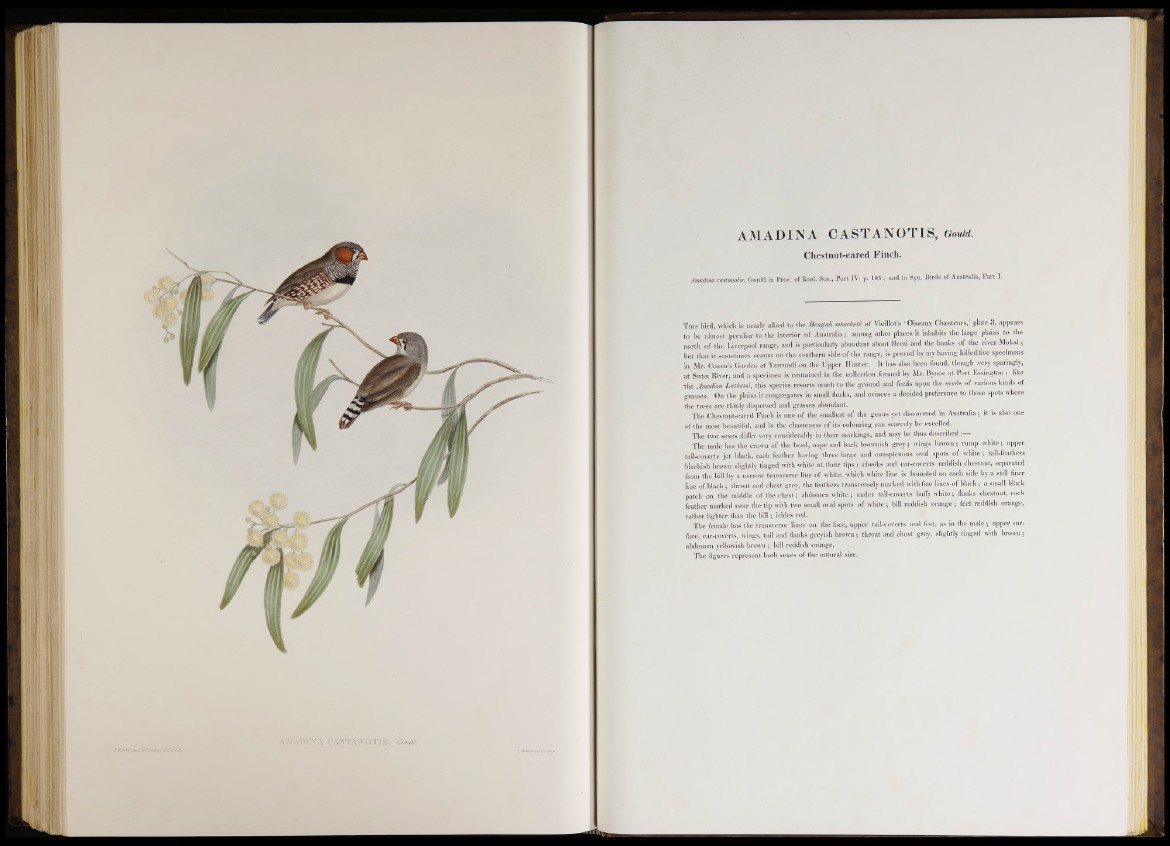
AMADINA CAST AN OTIS, Gould.
Chestnut-eared Finch.
Amadina castanotis, Gould in Proc. of Zool. Soc., Part IV. p. 105; and in Syn. Birds of Australia, Part I.
T h i s bird, which is nearly allied to the Bengali moucheté of Vieillot’s ‘ Oiseaux Chanteurs,’ plate 3 , appears
to be almost peculiar to the interior o f Australia ; among other places it inhabits the large plains to the
north o f the Liverpool range, and is particularly abundant about Brezi and the banks o f the river Mokai ;
but that it sometimes occurs on the southern side o f the range, is proved by my having killed five specimens
in Mr. Coxen’s Garden a t Yarrundi on the Upper Hunter. I t has also been found, though very sparingly,
a t Swan River, and a specimen is contained in the collection formed by Mr. Bynoe a t P o rt Essington : like
the Amadina Lathami, this species resorts much to the ground and feeds upon the seeds of various kinds of
grasses. On the plains it congregates in small flocks, and evinces a decided preference to those spots where
the trees are thinly dispersed and grasses abundant.
The Chestnut-eared Finch is one o f the smallest o f the genus yet discovered in Australia; it is also one
of the most beautiful, and in the chasteness o f its colouring can scarcely be excelled.
The two'sexes differ very considerably in their markings, and may be thus described :—
- The male has the crown of the head, nape and back brownish grey ; wings brown ; rump white ; upper
tail-coverts je t black, each feather having three large and conspicuous oval spots o f white ; tail-feathers
blackish brown slightly tinged with white a t their tips ; cheeks and ear-coverts reddish chestnut, separated
from the bill by a narrow transverse line o f white, which white line is bounded on each side by a still finer
line of black ; throat and chest grey, the feathers transversely m arked with fine lines of black ; a small black
patch' on the middle o f the chest ; abdomen white ; under tail-coverts buffy white ; flanks chestnut, each
feather marked near the tip with two small oval spots o f white ; bill reddish orange ; feet reddish orange,
rather lighter than the bill ; irides red.
The female has the transverse lines on the face, upper tail-coverts and feet, as in the male ; upper surface,
ear-coverts, wings, tail and flanks greyish brown ; throat and chest grey, slightly tinged with brown ;
abdomen yellowish brown ; bill reddish orange.
The figures represent both sexes of the natural size.